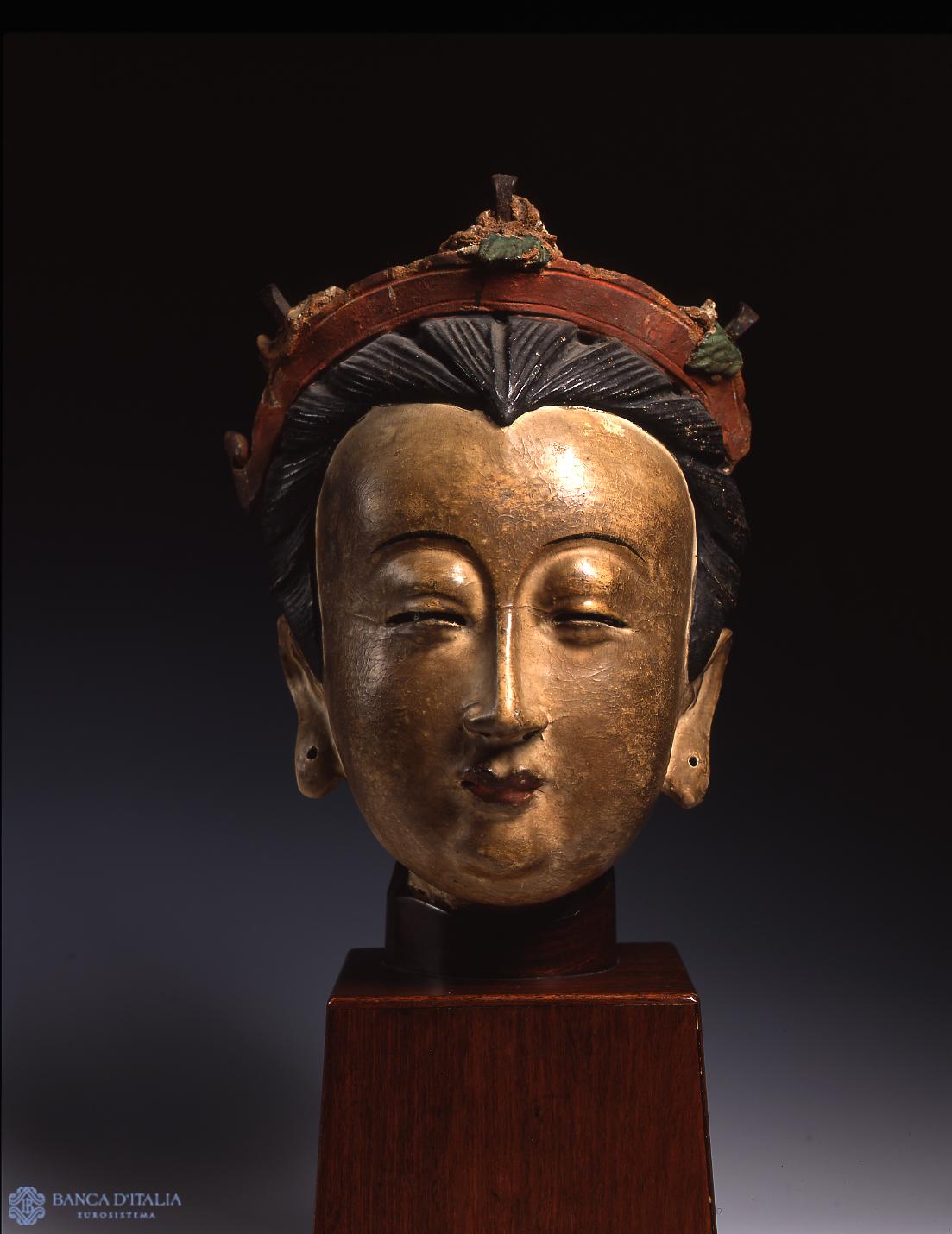This beautiful head dates from the end of the Ming or early Qing Dynasty and may be that of a court lady or legendary figure. However, the hieratic expression, typical extended earlobes and half-closed eyes staring fixedly ahead in meditation suggest the statue may be that of a Buddhist or Taoist divinity. The round cheeks, puffy eyelids, prominent forehead and chubby chin, the small pouting mouth beneath the finely etched nose, the arched eyebrows and the hair gathered tightly into an ornate band contribute to the full, smooth volume of the head. The combination of great technical skill with the pursuit of decorative effect is a typical feature of Ming Dynasty sculpture.
Sculpture, like painting, was exclusively religious in nature and had developed a more popular appeal than in earlier times as result of the influence of Tibetan Buddhism, particularly in the North of the country. Art adhered to ancient monastic rules, producing images of lesser gods or fabulous divinities, such as the demons and monsters of local legends.
Testa femminile
Female Head
18th century AD
17th century AD
Sculpture
Portrait

Date
1600 - 1700
Material and technique
Tainted earthenware
Measurements
28 x 20 x 19 cm
Compiler
Augusta Monferini
